Outbound Dialers: Definition, Types & How to Use Them
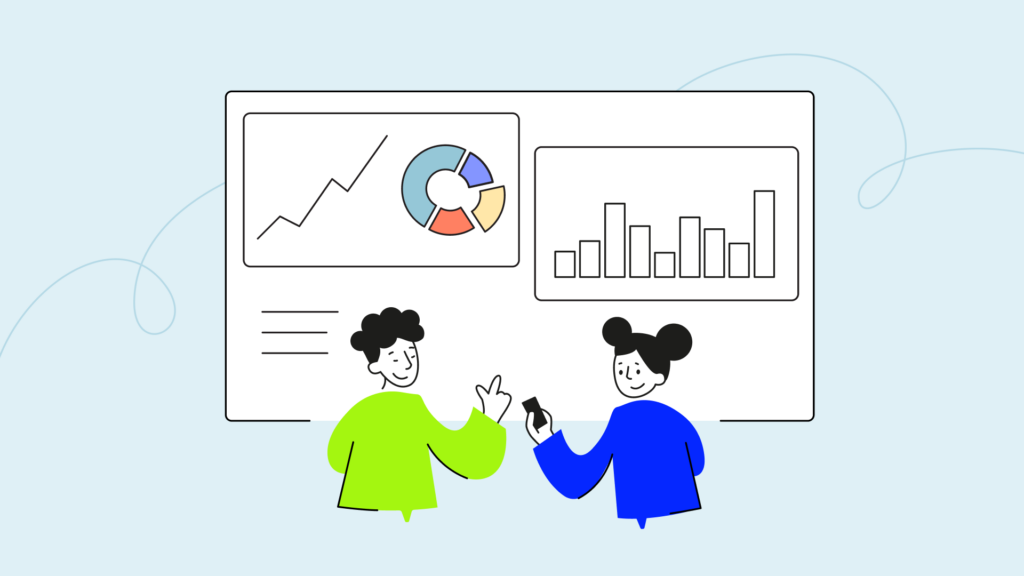
With an average cold call conversion rate of just 2%*, one of the keys to increasing revenue is making more calls. And the easiest way to do that? Outbound dialers.
Outbound dialers empower sales teams to reach many more potential customers, turning cold calls into real opportunities. These tools automate dialing, cut down on idle time, and help agents focus on what really matters: building connections and closing deals.
Cold calls still play a key role in sales, with 69% of buyers accepting them and 82% of those calls leading to meetings**. But handling high call volumes without the right tools can be a superhuman feat. That’s where outbound dialers step in.
Outbound dialers can transform your team’s efficiency, boosting daily calls and customer engagement while reducing costs.
Key Takeaways
- Outbound dialers can be broken down into four basic types based on complexity and use case: Power Dialers, Progressive Dialers, Predictive Dialers, Smart Dialers, and Parallel Dialers.
- Using dialer software for an outbound call center allows you to optimize team efficiency, customer engagement, lead management, conversion rates, etc.
- Matching the best outbound dialer to your use case can boost agent talk time by up to 300%, lower call times by up to 50%, and reach a lot more prospects.
What Is an Outbound Dialer?
Outbound dialer, or auto dialer, is a broad term commonly used for systems that automate the process of making outgoing calls. Instead of dialing numbers manually, these systems—known as Automatic Dialing Systems (ADS)—do the work for you.
In other words, automated outbound dialers save you from the hassle of hand-dialing all the numbers from your campaign lists. They can help you reach 300% more prospects per day, increase successful leads and appointments by 50%, and lower call times by 50%.
Given their capabilities, dialers are especially popular for sales teams. Its technology facilitates mass calling, saving time and energy while boosting team productivity: less effort and more results.
Why Are Businesses Using Outbound Dialers?
If your business runs outbound calling campaigns, outbound dialer software is a must-have tool. It supercharges your team’s productivity and results.
While telemarketing might be the first thing that comes to mind when thinking about outbound dialers, their applications go far beyond that. These tools are indispensable across a variety of industries:
- Debt collection agencies use them to automate follow-ups and improve recovery rates.
- Healthcare providers rely on them to schedule appointments or send reminders with ease.
- Organizations leverage this technology and nonprofit marketing software to reach more donors and drive engagement in fundraising campaigns.
- B2B companies use them to automate lead-generation campaigns and enhance customer experience.
With its versatility and impact, outbound dialer software is an invaluable resource for any organization that needs to make mass calls to their contact lists without missing a beat.
What Are the Different Types of Auto Dialers?
The outbound auto dialer market is broad and diverse, with various software types—each offering unique advantages, disadvantages, best practices, and ideal use cases. To help you navigate this topic, here are the main types:
Power Dialers
Power Dialers automatically dial one number at a time from a pre-defined list of contacts once an agent becomes available. This system provides greater control over assigned call queues.
They also can come equipped with features like Call Recording, Analytics, on-screen scripts, and CRM integrations. This makes them ideal for businesses running time-sensitive promotions or managing emergency notifications efficiently
Best For: Balanced call campaigns optimized for both reach and personalization. Operations where call quality, follow-up, and detailed interactions are essential.
Pros & cons
Pros:
- Increases productivity by automating dialing
- Ensures agents handle only connected calls
- Easy to implement
Cons:
- Inability to call several numbers simultaneously
- Agents may experience idle time waiting for connected calls
- Less efficient for extremely high-volume call scenarios
Pricing: Around $50 per agent/month.
Progressive Dialers
Just like Power Dialers, Progressive Dialers focus on dialing one contact at a time. The difference? They don’t just fire off calls in sequence. Instead, a Progressive Dialer waits until the agent is ready before starting the next call.
The next call can either be chosen by the tool or triggered manually by the agent, giving you more control over the pace and flow of calls.
Best For: Call campaigns that aim to balance broad reach with personalized engagement. Scenarios where customized and detailed interactions cannot be overlooked, such as B2B campaigns.
Pros & cons
Pros:
- One call per agent helps prevent dropped calls
- Balance efficiency while giving agents time to prepare
- Easy to implement
Cons:
- Giving agents control over initiating calls can impact overall productivity
- Longer time during the connection process, impacting overall efficiency
- Less efficient for extremely high-volume call scenarios
Pricing: Ranges from around $50 to several hundred dollars.
Predictive Dialers
Predictive Dialers are automated systems that anticipate when an agent will be free and start dialing multiple numbers before the current call finishes. It uses advanced algorithms to predict when the agents will become available and connect them only with answered calls.
This way, when the agent hangs up, another call is ready to go.
Best For: Large-scale operations focused on efficiency and throughput, such as collections, market research, or any environment where quick connections and high call volumes are prioritized over the quality of individual calls.
Pros & cons
Pros:
- Increases call volume and agent productivity
- Reduces the idle time between calls
- Maximizes efficiency for high-volume call centers
Cons:
- Can lead to a high rate of dropped calls
- May cause customer frustration due to connection delays
- Requires robust management to optimize performance
Pricing: The average cost is around $160 per user/month, ranging from $20 to $300 per user/month.
Smart Dialers
Smart Dialers are advanced systems designed to automatically gather numbers from CRM platforms or websites and queue them for dialing. When paired with a Click-to-Call tool, this system empowers agents to dial through their lists with greater efficiency and speed.
Best For: Businesses that rely on CRM systems and online customer prospecting, aiming to automate phone calls to enhance efficiency and boost productivity in large-scale sales operations.
Pros & cons
Pros:
- Easy Customization by ordering numbers through drag-and-drop
- Increases agent productivity, eliminating manual dialing
- Provides contextual data for personalized calls
Cons:
- Works better when integrated into a CRM system
- Requires a click-to-call feature to optimize the outbound calling system
- Requires robust management to optimize performance
Pricing: Around $50 per user/month.
Parallel Dialers
A Parallel Dialer dials multiple numbers simultaneously, connecting the first answered call to an available agent.
Unlike a Predictive Dialer, which uses algorithms to anticipate agent availability, a Parallel Dialer operates on direct commands to place multiple calls at once, providing a more straightforward approach to managing automated outbound calls.
Best For: Large-scale operations conducting high-volume outreach campaigns where speed is critical.
Pros & cons
Pros:
- Increases call volume and agent productivity
- Minimal idle time between calls
- Maximizes efficiency for high-volume outreach campaigns
Cons:
- Elevated rate of dropped calls
- If improperly managed, it can violate regulatory rules.
- Requires robust management to optimize performance
Pricing: Ranges from around $50 per user/month to several hundred dollars.
See How to Reach more customers while offering the best experience
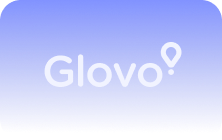
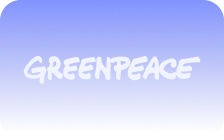
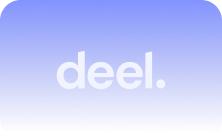
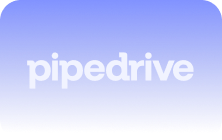
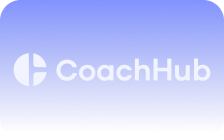
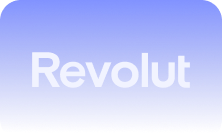
What Are the Benefits of Outbound Dialers?
Now that we’ve covered what dialers are capable of, it’s time to dive deeper into the benefits of using them. Let’s explore what you can gain by integrating outbound dialer solutions into your operations.
Increased Agent Productivity and Efficiency
Outbound dialers enable teams to make significantly more calls in a shorter timeframe. This results in more interactions with potential customers, increasing conversion opportunities.
Industry statistics reveal that automatic dialers can boost agent talk time by up to 300%, allowing them to connect with more prospects in significantly less time.
Real-Life Example
Poliglota increased its agent productivity by 10% and outbound success by 30% after onboarding CloudTalk as its outbound call center software.
Enhanced Customer Engagement
By streamlining the calling process, outbound dialers enable agents to spend more time building relationships with prospects and offering a better customer experience.
With features like Call Recording and CRM Integration, agents can personalize interactions and provide better service, ultimately improving customer satisfaction and retention.
Real-Life Example
MyHeritage managed to boost its monthly call volume by 49% after incorporating CloudTalk’s dialer-friendly call campaigns.
Improved Lead Management and Conversion Rates
Lead management becomes more structured as phone dialers organize contact lists, schedule follow-ups, and track interactions. This structured approach can provide accuracy in number verification, ensuring no lead is overlooked, which leads to better campaign results.
Reduced Idle Time for Agents
With automated dialing, agents spend less time waiting between calls. The system dials the next number based on predefined rules, minimizing downtime and keeping agents productive throughout their shifts.
Still underestimating the value of downtime? A staggering 98% of businesses report that a single hour of downtime can result in over $100,000 in lost productivity.
Real-Life Example
PlanRadar increased its call handling efficiency by 70% just months after incorporating CloudTalk into its operations.
Reduced Operational Costs
Using automated outbound call software also helps reduce operational costs. With greater efficiency in calls and less idle time, companies can significantly save on labor expenses.
In other words, your operation requires less manpower to handle the same volume of work. This is especially valuable for small businesses with limited budgets.
Performance Analysis and Monitoring
Outbound dialer systems usually come coupled with analytical features that allow companies to monitor the performance of agents and campaigns. This enables a detailed analysis of metrics such as conversion rates and average call duration, making it possible to implement strategic adjustments.
Compliance and Risk Management
Automatic dialers are equipped with features to ensure compliance with regulations such as the Telephone Consumer Protection Act (TCPA) and Do Not Call (DNC) lists. Dialer software helps mitigate the risk of non-compliance and potential legal issues by automatically screening numbers and recording consent.
How to Choose the Right Active Dialer for Your Business
Choosing the ideal outbound dialer for your business can make a significant difference in the efficiency of your sales and customer service operations. With so many options available, it’s crucial to understand which one best fits your specific needs.
Below, we highlight the key factors to consider, such as features, scalability, integration, and support, to help you make an informed decision and optimize your results.
- Business Needs and Goals: Think about the expected call volume, the complexity of interactions (mass approaches or personalized ones), and your desired outcomes, such as conversion rates or engagement levels.
- Features and Functionalities: Consider the features that complement them, such as analytical reports, automatic dialing, and call recording. Each of these features plays a crucial role in enhancing the efficiency and performance of your operations.
- 3rd Party Integrations: Integration with your tech stack is essential for seamless operations and data management. Choose an outbound dialer that offers integration capabilities with popular tools, such as Salesforce and HubSpot.
- Scalability: Make sure your outbound dialer keeps up with business growth. Platforms that allow you to add agents or increase call volumes without requiring frequent migrations are ideal.
- Keep an Eye on Compliance: Compliance with regulations is paramount if you want to run efficient outbound campaigns, especially internationally. Therefore, it’s vital you look for a provider that fulfills all requirements in your target countries.
The 3 Best Practices For Outbound Dialing
Auto dialers can take your outbound strategy to the next level. To get the best of them, it’s crucial to implement practices that boost your team’s efficiency and drive better campaign outcomes:
- Train & Equip Your Team: Provide comprehensive training to your sales team to ensure they are engaged and proficient in using the outbound dialer software.
Tip: Hold monthly workshops and provide reference materials, such as quick guides and how-to videos, to keep your team up to date on best practices. - Invest Time in Scripting & Call Planning: Develop well-crafted scripts and call plans to guide your sales team during outbound calling campaigns.
Tip: Tip: Bring your team together periodically to review scripts and run simulations, testing different approaches and incorporating practical insights. - Monitor & Analyze Call Metrics: Regularly monitor and analyze call metrics to evaluate the performance of your outbound dialing campaigns and identify areas for improvement.
Tip: Use data-driven insights to optimize dialing parameters, refine scripts, and allocate resources effectively to maximize results.
Warm Up Your Cold Calls With Outbound Dialers
Outbound dialers are way more than dialing repeaters; they are powerful assets that can turn your sales and customer service teams into high-performing powerhouses.
With their ability to streamline workflows and increase call volume, dialers enable your business to drive better results in less time.
In the quest to find the right customer, you’ll likely need to reach out to dozens of the wrong ones. On average, sales reps need to make 209 calls to secure just one appointment or meeting. That’s why it’s crucial to make the process as fast and efficient as possible.
Make no mistake; cold calls are still a result-driving initiative—you just need to use the right tools and invest in technologies that optimize your approach, like outbound dialers.
Sources:
FAQs
What is the meaning of an outbound dialing system?
An outbound dialing system automates the process of making outgoing calls, increasing efficiency by automatically dialing numbers for agents to engage with.
How does a dialer work?
A dialer automates the dialing process by selecting and dialing phone numbers, then connecting answered calls to available agents, saving time and effort.
What does an outbound caller do?
An outbound caller contacts potential or existing customers for purposes like sales, follow-ups, or marketing, often using an automated dialing system for efficiency.
What is the best dialer for outbound call centers?
The best outbound dialer depends on call volume and goals. Popular choices include predictive, power, and progressive dialers for different needs.
What is the difference between on-premises and cloud dialers?
On-premises dialers are hosted locally within your organization, while cloud outbound dialers are internet-based, offering flexibility, scalability, and easier maintenance.
What are the outbound dialer types?
The list of dialers includes predictive, power, smart, progressive, and parallel types, each designed to optimize call handling based on factors like speed, agent availability, and automation.





































